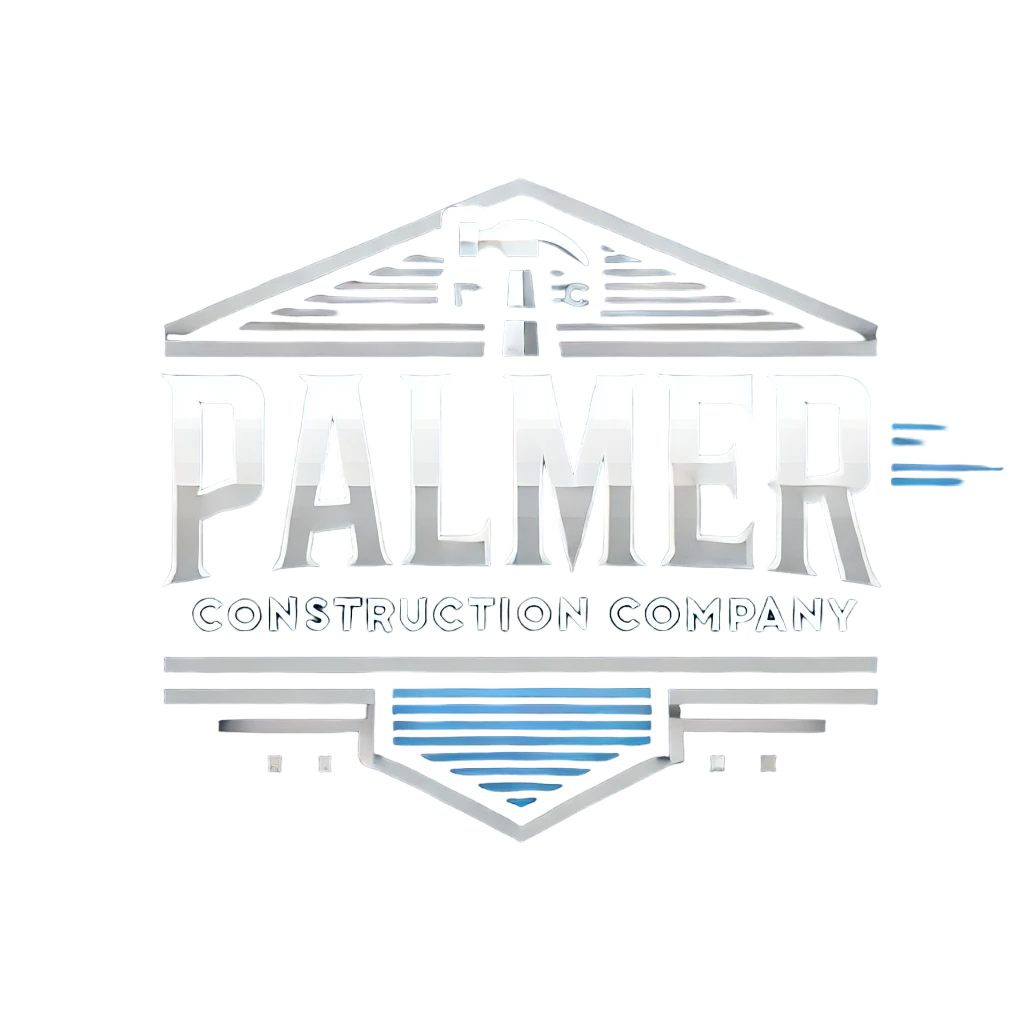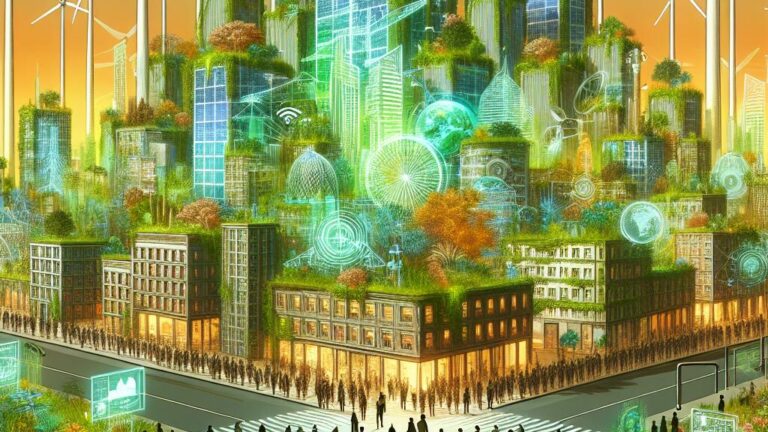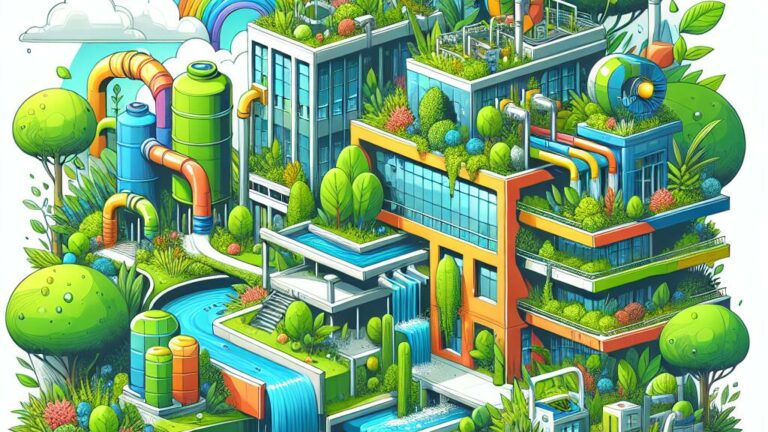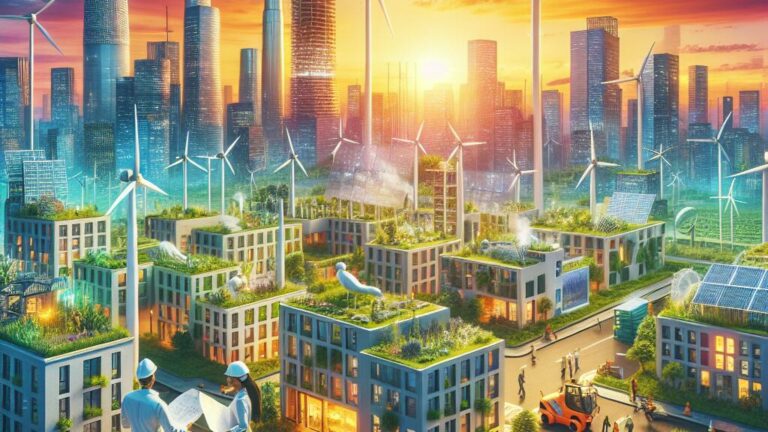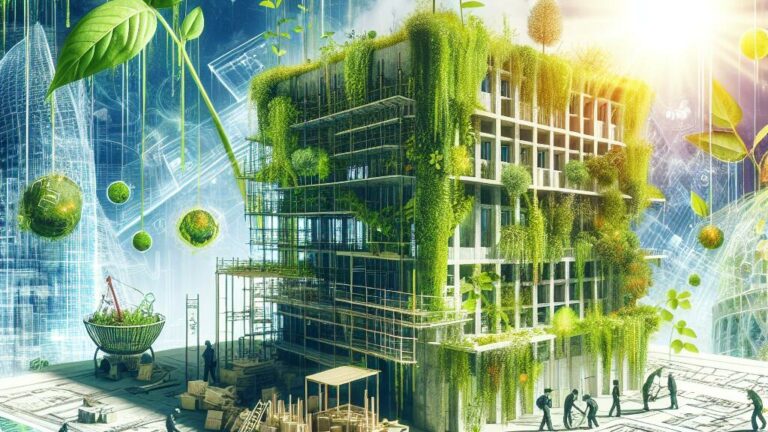Table Of Contents
Discover the Key Benefits of Green Building Projects for a Sustainable Future
Key Takeaways
- Comprehending Eco-Friendly Construction
- Ecological Advantages of Sustainable Building Initiatives
- Financial Benefits of Environmentally Conscious Structures
- Wellness and Health Perks of Green Architecture
- Societal Effects of Sustainable Construction Practices
- Accreditation and Criteria in Eco-Friendly Building
Understanding Green Building
Green building refers to the practice of designing and constructing buildings with an emphasis on sustainability and environmental responsibility. This approach utilizes green building materials and innovative green design techniques to minimize energy consumption and reduce waste. Organizations like the U.S. Green Building Council promote the importance of sustainable building practices and provide certifications for projects that meet specific environmental standards. Green architects play a crucial role in integrating these principles, creating green buildings that not only enhance the quality of life for occupants but also contribute to the broader goals of greening communities and fostering economic growth. Understanding the benefits of green building projects encompasses various aspects, including reduced carbon footprints, improved indoor air quality, and increased property value, which collectively support healthier living environments and long-term sustainability.
Definition of Green Building
Green building encompasses the design, construction, and operation of sustainable buildings that minimize environmental impact and promote energy efficiency. These buildings utilize eco-friendly building materials and innovative technologies such as green roofs and sustainable landscaping to optimize natural resources. Sustainable architects focus on integrating green power solutions and adhering to building regulations that align with the principles of sustainable development. The Benefits of Green Building Projects extend beyond the environment, impacting the economy and public health.
The Building Research Establishment Environmental Assessment Method (BREEAM) serves as a standard for evaluating the performance of green buildings. This certification encourages developers to adopt sustainable construction practices, ensuring that their projects contribute positively to local communities. Going green not only helps reduce energy consumption but also enhances occupant comfort and productivity. As awareness grows, the demand for sustainable buildings continues to rise, driving innovation and creating opportunities in the green job market.
| Key Features | Benefits | Sustainable Practices |
|---|---|---|
| Energy Efficiency | Reduces utility costs | Use of energy-efficient appliances and systems |
| Water Conservation | Minimizes water usage and waste | Installation of low-flow fixtures and rainwater harvesting |
| Indoor Air Quality | Improves health and well-being | Use of Non-toxic materials and proper ventilation |
| Use of Renewable Resources | Reduces dependence on fossil fuels | Incorporation of solar panels and wind energy |
Role of Green Building Councils
Green Building Councils play a pivotal role in promoting the benefits of green building projects. They set industry standards that encourage sustainable design and architecture, influencing practices around building insulation and the use of eco-friendly building supplies. By providing guidelines and frameworks, these councils facilitate the implementation of advanced environmental design principles. This includes encouraging green retrofits and passive solar building design, which significantly contribute to enhancing the sustainability of existing and new structures.
Through initiatives such as the building energy codes program and the Well Building Standard, these councils enhance the overall impact of green buildings on both the environment and human health. Their efforts in advocating for sustainable practices lead to increased awareness and adoption of green technologies within the industry. Ultimately, the contributions of Green Building Councils not only align with sustainability goals but also amplify the benefits of green building projects, creating healthier communities and a more robust environment.
Environmental Benefits of Green Building Projects
The benefits of green building projects are increasingly recognized within the built environment. These projects significantly reduce the greenhouse effect through sustainable practices that minimize carbon emissions and energy consumption. Architects play a crucial role in designing LEED-certified buildings that prioritize environmental protection and promote healthier indoor environmental quality. As sustainable communities emerge, the focus on creating spaces that facilitate a sustainable future becomes paramount. The commitment to green building not only enhances the natural ecosystem but also fosters economic growth through green job creation and resource conservation.
Reduction of Carbon Footprint
Green building projects significantly reduce carbon footprints, which is one of the key benefits of green building strategies. Architects and builders incorporate renewable resources and efficient landscaping techniques to minimize environmental impacts. The use of energy-efficient materials and building methods aligns with the principles of Leadership in Energy and Environmental Design (LEED), contributing to environmental preservation. These practices not only save energy but also lower greenhouse gas emissions, reflecting an ongoing commitment to sustainability.
Implementing green building benefits extends beyond immediate energy savings. The environmental impacts of reduced carbon emissions contribute to a healthier planet, benefiting future generations. By prioritizing energy efficiency and utilizing renewable resources, the benefits of green building projects become evident. Communities that adopt these strategies experience improved air quality and enhanced overall resilience against climate change, highlighting the significant advantages of green construction methods.
- Promotes sustainable use of natural resources
- Reduces reliance on fossil fuels
- Lowers utility costs for homeowners and businesses
- Encourages biodiversity through native landscaping
- Improves the health and well-being of occupants
- Supports local economies through green job creation
- Mitigates climate change effects through lower emissions
Conservation of Natural Resources
The implementation of green building practices significantly contributes to the conservation of natural resources. Through effective green building measures, the industry actively reduces waste and minimizes the consumption of materials. Green building aims to use sustainable resources, prioritizing renewable materials over non-renewable ones. This approach not only supports the environment but also aligns with green building standards that emphasize resource efficiency and sustainability. By integrating these practices, the green building sector fosters a more conscious use of resources, ultimately benefiting both ecological health and economic stability.
Green building programs focus on innovative design elements that support environmental conservation. These programs encourage the adoption of technologies and practices that result in efficient energy and water use, further reducing the strain on natural resources. By creating green building jobs centered around sustainable practices, the industry promotes a workforce skilled in implementing eco-friendly solutions. Emphasizing the benefits of green building projects, the movement not only aims to preserve natural ecosystems but also enhances community resilience through responsible resource management practices.
Economic Advantages of Building Green
Green building initiatives provide substantial economic advantages that resonate throughout the real estate market. Green built properties often feature lower energy costs due to their efficient designs, which significantly reduces operational expenses over time. This financial efficiency leads to increased property value, as buyers are increasingly drawn to sustainable building projects that promise long-term savings. Green buildings work by incorporating advanced materials and technologies, thereby enhancing their appeal in a competitive market. Research within the green buildings industry highlights that the adoption of green construction practices not only contributes to environmental sustainability but also generates job opportunities in green renovations. Ultimately, the benefits of green building projects extend beyond environmental considerations, positioning them as a smart investment for the future.
Lower Energy Costs
The financial implications of adopting sustainable building designs are profound. Reduced energy consumption is one of the key benefits of green building projects, as green buildings use advanced technologies and materials that enhance energy efficiency. Green builders often incorporate renewable energy sources, allowing buildings to generate their own power. This results in lower utility bills for green building occupants, making green structures financially appealing in a market where energy costs continue to rise.
Examining the trends in green buildings, it is evident that the demand for energy-efficient solutions is increasing. The green building concept is not a mere passing trend; it dates back decades and has evolved with innovative green construction methods and techniques. Sustainable practices in building construction not only help the environment but also offer financial relief to owners. As green buildings continue to thrive, property owners who embrace such designs can expect significant cost savings over time, enhancing the overall appeal of their investments.
Increased Property Value
Investing in sustainable building design significantly boosts property value. Green homes attract discerning buyers who prioritize eco-friendly building practices. The use of green materials and adherence to rigorous green standards enhance the overall appeal of a property. As green buildings focus on energy efficiency and sustainability, they appeal to the growing market of environmentally conscious homeowners. This demand for green projects translates into higher market prices, making these properties a wise investment.
The long-term financial benefits associated with building projects that incorporate sustainable building practices are undeniable. Properties that are compliant with established green standards often experience increased resale values. In cities where green designers are becoming the norm, the market for environmentally sustainable homes continues to expand. Homebuyers are now seeking properties that not only reduce their ecological footprint but also offer modern amenities and comfort, further driving up the value of green buildings.
Note: The utilization of green practices in construction increasingly shapes the real estate landscape, reflecting a shift towards sustainability.
- Increased demand for eco-friendly homes leads to a competitive market.
- Energy-efficient features reduce utility costs, appealing to budget-conscious buyers.
- Sustainable buildings often require lower maintenance costs, enhancing long-term value.
- Properties with green certifications can qualify for tax incentives and rebates.
- An eco-friendly reputation attracts higher-quality tenants for rental properties.
- The trend toward sustainability is likely to continue, ensuring lasting property relevance.
- Buyers are willing to pay a premium for sustainable upgrades and innovations.
Health and Wellbeing Benefits
The Benefits of Green Building Projects extend beyond environmental gains, significantly impacting health and well-being. By prioritizing building design that adheres to green standards, sustainable architects create environmentally-friendly buildings that promote better indoor air quality. This leads to improved comfort and productivity for occupants, as advanced building technologies minimize harmful pollutants and allergens. Incorporating efficient building practices during construction projects also enhances long-term building maintenance, contributing to the overall sustainability goals of communities. With the integration of these elements, green means not only protect the environment but also foster healthier living spaces that benefit everyone involved.
Improved Indoor Air Quality
High indoor air quality is a significant outcome of eco-friendly construction practices. Implementing energy-saving building systems and solar building design significantly enhances building performance. These approaches reduce the presence of pollutants and allergens indoors, aligning with campus sustainability goals. Certified construction projects often involve materials and techniques that prioritize air quality, leading to healthier environments for occupants.
Transitioning from standard building practices to a sustainable construction approach fosters improved indoor air quality. Old projects typically lack the advancements found in higher-quality building techniques prevalent in green projects. The Benefits of Green Building Projects extend beyond energy efficiency, as these initiatives provide a cleaner, more breathable atmosphere. Emphasizing sustainability efforts during the design and construction phases directly contributes to healthier living and working spaces.
| Building Type | Construction Technique | Key Benefits |
|---|---|---|
| Residential Homes | Passive Solar Design | Reduces heating and cooling needs; improves airflow |
| Commercial Offices | Green Roofs | Enhances air quality; reduces urban heat effect |
| Schools | Low-VOC Materials | Minimizes airborne toxins; promotes student health |
| Healthcare Facilities | Advanced Filtration Systems | Improves patient outcomes; reduces infection rates |
| Retail Spaces | Natural Ventilation | Enhances customer experience; reduces energy costs |
Enhanced Comfort and Productivity
Green building initiatives often incorporate certain building features that significantly impact occupant comfort and productivity. By utilizing sustainable landscaping practices and optimizing building systems, building owners can create environments that promote health and well-being. LEED projects serve as prime examples of national projects that prioritize these elements. The benefits of green building projects extend to reduced building-related carbon emissions, enhancing the overall quality of the indoor environment.
Individual projects that embrace green practices tend to report higher levels of tenant satisfaction. The emphasis on natural light, effective ventilation, and smart building processes contributes to a more stimulating and comfortable atmosphere. These environmental advantages not only benefit occupants but also support building owners in attracting and retaining tenants. Green power resources and efficient energy usage further elevate the overall experience in green buildings, delivering substantial benefits of green building projects.
Community Impact of Green Building
Green building initiatives significantly contribute to the overall health and prosperity of communities. The adoption of sustainable materials and sustainable strategies in construction leads to tangible benefits that extend beyond individual projects. These benefits of green building projects include improved environmental quality, which positively impacts public health and well-being. Sustainability consulting services play a crucial role in guiding the building sector towards effective building controls and practices, ensuring that developments are both eco-friendly and economically viable. An added benefit is the creation of green jobs, which support local economies and promote a workforce skilled in sustainability. Overall, these multifaceted benefits not only enhance community resilience but also foster a culture of sustainability that influences future generations.
Promoting Sustainable Development
Sustainable development emerges as a crucial aspect of contemporary construction, especially as builders increasingly focus on integrating sustainable components into new building designs. The benefits of green building projects extend beyond environmental considerations; they encompass economic, social, and health-related advantages. Facilities constructed with sustainability in mind often boast advanced building controls that optimize energy efficiency. This shift away from non-green forms of construction allows buildings to account for their environmental impact more responsibly, creating a tangible benefit for both the community and the planet.
The building sector accounts for a significant portion of global resource consumption, making it vital to prioritize sustainable practices. Implementing green building standards not only elevates the quality mark of structures but also promotes a culture of sustainability in urban development. By encouraging builders to adopt eco-friendly practices, the potential for long-term benefits becomes evident. The integrated approach fosters community resilience while ensuring that future generations can thrive in healthier, more sustainable environments.
Creating Green Jobs
Green building initiatives not only focus on reducing environmental impacts, but also create numerous job opportunities within the community. With the rise of sustainable practices, the demand for skilled workers who can implement eco-friendly materials and comply with building energy codes has significantly increased. This demand leads to the emergence of new roles in the building sector, focusing on sustainable solutions and maximizing project resources. One of the main building housing sectors impacted is the construction industry, which benefits from a workforce trained in innovative and energy-efficient technologies.
The economic effects of creating green jobs extend beyond immediate employment. As more professionals enter the field, they contribute to the potential benefits of green building projects, fostering a culture of sustainability. This integration of green jobs not only supports local economies but also encourages companies to invest in the top benefits that green building offers. An important benefit is the cultivation of a workforce that is knowledgeable and skilled in eco-friendly construction practices, ultimately enhancing the overall effectiveness and appeal of green building initiatives.
Certification and Standards in Green Building
Certification and standards play a crucial role in the success of green building initiatives. By adhering to established criteria, building professionals can achieve significant benefits, including enhanced performance in eco-homes and renovations. These certifications not only validate the use of sustainable materials but also emphasize improvements over conventional building practices. With a focus on building sciences, projects that comply with these standards contribute to a sustainable transformation in the construction industry. The economic benefits of these projects are substantial, as they often result in lower operating costs and increased property value. Embracing certification fosters a commitment to the Benefits of Green Building Projects, ultimately leading to healthier and more efficient environments.
Overview of Green Building Council Certifications
Green Building Councils play a vital role in promoting the Benefits of Green Building Projects through various certification systems. These certifications focus on major initiatives that enhance sustainability in the construction industry. They assess parameters like energy efficiency, water conservation, and the use of sustainable materials. By setting standards, these councils encourage the creation of large facilities that minimize the natural greenhouse effect while fostering a good indoor environment.
Certified buildings not only benefit the occupants but also contribute to the development of sustainable neighborhoods. Energy-efficient installations and effective construction management practices lead to numerous benefits, including reduced operational costs and lower environmental impact. As more stakeholders recognize the incredible benefits associated with green certifications, the advocacy for improved environments becomes a priority in the construction industry.
Importance of Compliance with Standards
Compliance with standards in green building ensures that residential structures are designed and constructed with an emphasis on sustainability and environmental considerations. Ingenious architects can capitalize on opportunities to utilize certain construction materials that not only enhance energy efficiency but also align with the overall goals of environmental impact reduction. This adherence to standards results in the myriad benefits of green building projects, unlocking a pathway towards a more sustainable transition within the building lifecycle.
Standards also play a vital role in achieving improved building ventilation, which contributes directly to the health and well-being of the occupants. By following established guidelines, green building projects can maximize their benefit to the environment and community. Such compliance supports the principle of building for the future, ensuring that every structure contributes positively to the ecological balance while providing valuable resources for its inhabitants.
Conclusion
The Benefits of Green Building Projects extend far beyond individual structures, influencing broader community and environmental health. These initiatives foster a culture of sustainable development efforts that prioritize ecological responsibility. Improved indoor air quality, reduced energy costs, and the creation of green jobs highlight the multifaceted advantages that come from adopting eco-friendly practices. As more stakeholders recognize the significance of these Benefits of Green Building Projects, the push for greener construction continues to shape the future of urban landscapes and promote resilient communities.
FAQS
What are the environmental benefits of green architecture and how do they affect the green building industry?
Green architecture focuses on minimizing negative impacts on the environment and enhancing building performance through various sustainable construction techniques. These green building factors not only contribute significantly to sustainability but also reduce energy consumption, fostering a green building design that aligns with green initiatives. By incorporating sustainable materials and adhering to the green buildings concept, projects can create a positive impact in the global building sector. Green buildings truly build a demand for eco-friendly structures, offering many benefits to people while ensuring quality marks in sustainability. Research indicates that green building reduces the overall carbon footprint and promotes a sustainable way of living while addressing the challenges faced by the building sector energy.
How do sustainable architecture practices contribute to the green building industry, and what are the key benefits of green buildings for people and the environment?
Sustainable architecture plays a crucial role in the green building industry by promoting practices that enhance building performance and create healthier living spaces. Green buildings incorporate sustainable materials and utilize green construction techniques that minimize environmental impact. Research shows that green buildings create a demand for efficient energy use and conservation, which ultimately benefits people by providing superior indoor environments and lower operating costs. Additionally, the green building rests on principles that support long-term sustainability, leading to enhanced quality marks for developments. The benefits of green buildings include improved air quality, reduced energy consumption through green power recommendations, and a positive impact on building sites, making a strong case for their continued growth within the green building industry.
How does the demand for green buildings enhance the research and performance in the green building industry?
The demand for green buildings truly drives innovation and research in sustainable materials and processes, resulting in enhanced building performance. Furthermore, buildings that account for environmental benefits often achieve a sustainability quality mark, reflecting their commitment to eco-friendly practices. This shift not only builds awareness but also increases the overall market for green buildings.
How does the demand for green buildings impact green building research and the use of sustainable materials?
The rising demand for green buildings truly influences green buildings research, leading to innovations in sustainable materials that keep the construction industry evolving. As more buildings account for environmental impact and sustainability, research into effective green building practices dates back several decades, showcasing a continuous commitment to improving our built environment.
How does the history of green building truly influence current trends in sustainable architecture and the demand for green buildings today?
The history of green building truly impacts modern sustainable architecture by showcasing the evolution of design strategies that promote energy efficiency. As green building dates back several decades, its foundational principles continue to drive innovations in the field. Today, the demand for green buildings is higher than ever, as consumers look for homes and offices that utilize sustainable materials keeps the environment in mind while also enhancing their quality of life.
How do economic factors influence the demand for green buildings in today’s construction market?
Economic factors significantly affect the green buildings demand, as more stakeholders recognize the long-term savings associated with energy efficiency and sustainable practices.
